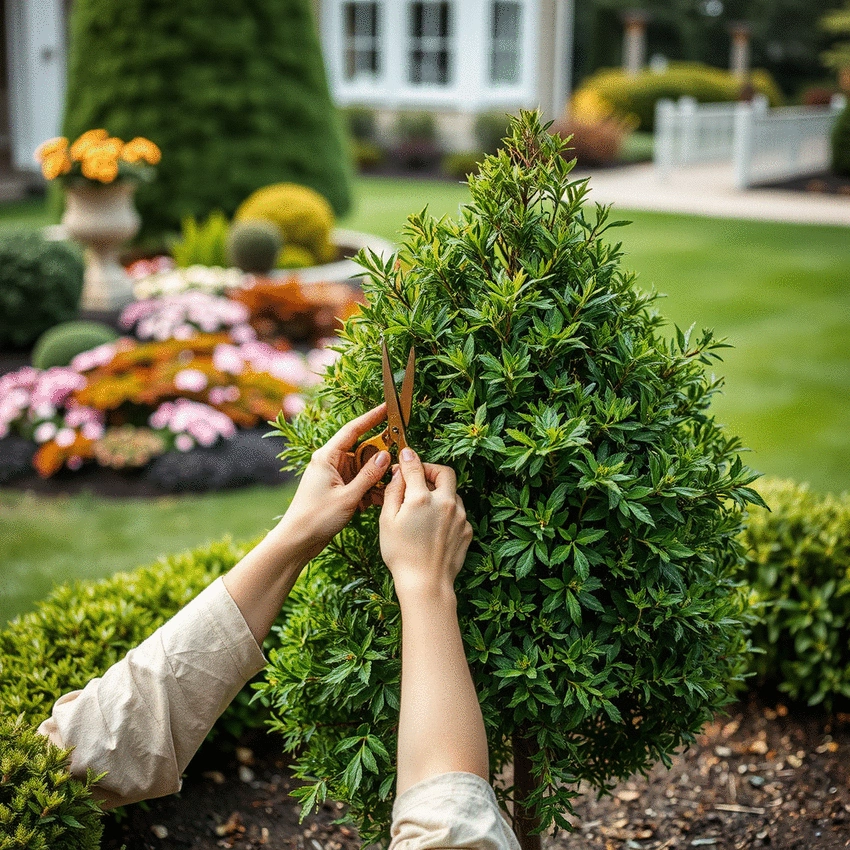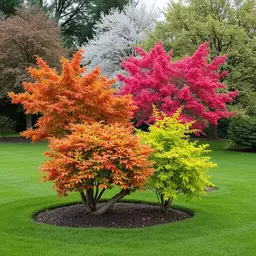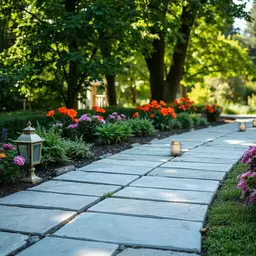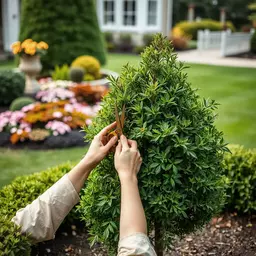Year-Round Trees for Your Landscape
By Celia Fairchild / Nov 02
In the world of gardening, pruning isn't just a routine task; it’s an art that can greatly influence the health and beauty of your ornamental shrubs. By mastering the techniques and timing, you can turn your garden into a vibrant masterpiece. Ready to elevate your gardening skills?
Understanding the right pruning technique is vital for maintaining healthy ornamental shrubs. Here’s a visual breakdown of the two main techniques and their applications.
Thinning involves removing entire branches back to their origin, improving air circulation and maintaining the shrub's natural shape. Ideal for older shrubs.
Heading cuts shorten stems to encourage bushier growth, ideal for shrubs that bloom on new wood like certain hydrangeas.
Choosing the right technique depends on the shrub type and its blooming cycle.
Remember these key factors for effective pruning:
Pruning ornamental shrubs is not just about aesthetics; it's a vital part of maintaining the health and vitality of your plants. At Ornamental Yard, I believe that understanding the art and science of pruning can transform your garden into a stunning outdoor retreat. Let's dive into the essentials you need to know about pruning elegant ornamental shrubs!
Pruning is essential for enhancing the beauty of your ornamental shrubs. By removing dead or overgrown branches, you allow sunlight to reach the inner leaves, promoting healthy growth. This process not only improves the appearance but also strengthens the plant’s overall resilience. For more tips on maintaining a beautiful outdoor space, check out these essential tips for tree care.
Moreover, regular pruning helps prevent diseases and pests. By eliminating weak or diseased branches, you create a healthier environment for your plants to thrive. It’s like giving your shrubs a fresh start and encouraging lush foliage and vibrant blooms!
Identifying the right types of ornamental shrubs is key to a beautiful landscape. Some common elegant varieties include:
Each of these shrubs has unique characteristics that can enhance your garden's aesthetics. At Ornamental Yard, I often find that homeowners appreciate how these plants can be used creatively in various settings!
When choosing the right plants, you want to consider their growth habits and blooming cycles. For example, hydrangeas thrive in partial shade and require regular pruning to maintain their shape and encourage new flowers. Meanwhile, boxwoods can be easily shaped and are often used as borders or accents in formal gardens. To learn more about selecting the right plants for your landscape, explore our guide on selecting ornamental shrubs for landscaping.
On the other hand, roses vary widely in size and form, which makes them versatile for different garden styles. Remember, each shrub type has specific pruning needs and timing for optimal results!
When pruning, it's important to differentiate between two main techniques: thinning and heading. Thinning involves removing entire branches back to their origin, which opens up the center of the shrub for better air circulation. This method is great for maintaining the natural shape of the plant.
Conversely, heading cuts shorten a stem or branch, encouraging bushier growth. This technique is often used to promote fuller foliage and is ideal for shrubs that may become leggy over time.
Using the right cut at the right time is crucial for the health of your ornamental shrubs. Here’s when to use each technique:
Being mindful of these techniques can significantly impact the longevity and beauty of your plants!
To achieve great results, having the right tools is a must! Here are some essential gardening tools for pruning:
Investing in quality tools will make your pruning tasks easier and more efficient, ensuring healthy growth for your ornamental shrubs!
While all tools mentioned are important, pruning shears truly deserve a spotlight. A good pair can make all the difference in achieving clean cuts that minimize damage to your plants. Remember to keep them sharp and sanitized to prevent the spread of diseases!
At Ornamental Yard, I often remind gardeners to invest in their tools. This not only makes pruning easier but also supports the overall health of your garden!
Timing is everything when it comes to pruning. Different shrubs have specific seasons when they benefit most from pruning. Understanding these patterns can greatly enhance your landscaping efforts.
For example, many spring-flowering shrubs should be pruned immediately after they bloom. In contrast, summer-flowering shrubs are best pruned in early spring. By aligning your pruning schedule with the needs of your plants, you can foster a thriving garden!
Here’s a quick guide to help you decide when to prune:
Being strategic with your pruning seasons ensures that your shrubs grow strong and healthy!
When planning your pruning schedule, consider the following:
These factors are essential for maintaining a beautiful and well-groomed landscape!
Spring-flowering shrubs need careful attention. The best practice is to prune them right after they bloom. This helps maintain their shape and encourages new growth for the next season.
Pay attention to the size of the blooms to ensure you only cut back the necessary branches, allowing the plant to focus its energy on flowering!
When it comes to evergreens, less is often more. Prune to maintain their desired shape but avoid cutting back too much foliage. A gentle trim ensures they stay healthy and visually appealing.
Be sure to keep your pruning cuts clean and precise to promote healing and prevent disease!
Deciduous shrubs, which lose their leaves in winter, have unique needs. It’s essential to prune them during their dormant period, typically late winter or early spring. This allows for better visibility of their branching structure and makes it easier to shape them.
Additionally, be cautious not to remove too much growth; aim for a balanced appearance that enhances their natural beauty! For more detailed guidance, consider our article on how to enhance your outdoors with shrubs.
As garden lovers, we should always consider sustainable practices. Using eco-friendly tools, such as battery-operated shears or compostable materials, can reduce our environmental impact. At Ornamental Yard, I advocate for practices that not only benefit our gardens but also the planet!
Choose tools made from sustainable materials and avoid synthetic fertilizers to keep your garden as natural as possible.
After pruning, think about recycling the material. Here are some tips for composting:
This not only reduces waste but also enriches your soil, creating a healthier garden ecosystem!
Incorporating organic practices, such as using compost and natural pest repellents, can significantly enhance the health of your ornamental shrubs. With these methods, you’ll create a thriving environment that fosters beautiful, resilient plants.
Always remember, a healthy garden is a beautiful garden!
Visual aids can make a big difference in how well you understand pruning techniques. Look for diagrams that illustrate the correct cuts and watch videos that demonstrate real-life pruning sessions. These resources can help you visualize the process, making it easier to apply.
At Ornamental Yard, I often share helpful visuals with my community to empower them in their gardening journeys!
Consider creating your own pruning guide! Document your pruning experiences with photos and notes. This personal touch will not only help you remember techniques but also provide a valuable reference for the future.
Plus, it’s a wonderful way to track your garden's growth over the seasons!
Knowing your local climate is crucial for effective pruning. For example, in warmer regions, you may need to prune earlier in the season compared to cooler climates. Understanding these nuances will ensure your shrubs thrive!
Always consider your hardiness zone to make informed decisions about pruning techniques.
Different hardiness zones can affect how and when you prune:
Being aware of these factors allows you to tailor your approach, ensuring a vibrant garden year after year.
Soil conditions can also influence how your shrubs respond to pruning. If your soil is compacted or poor, be gentle with your pruning, as stressed plants may react negatively. Ensuring good drainage and healthy soil can significantly improve your shrubs' resilience.
At Ornamental Yard, we emphasize the importance of soil health in every gardening project. A strong foundation leads to beautiful results!
When pruning your ornamental shrubs, always remember to step back and assess the overall shape and balance of the plant. This will help you avoid over-pruning and ensure a more natural, aesthetically pleasing result. Additionally, consider using the "one-third rule": Never remove more than one-third of the plant's total foliage in a single pruning session. This approach promotes healthy growth while maintaining the shrub's structure! For further ideas on garden design, explore designing your luxurious outdoor space.
As we wrap up our discussion on pruning elegant ornamental shrubs, it’s important to reflect on the essential insights we've covered. Pruning isn’t just a gardening chore; it’s a way to enhance the beauty and health of your plants. By understanding the best practices and techniques, you can transform your garden into a vibrant retreat that showcases the natural elegance of your ornamental shrubs!
One key takeaway is the significance of timing when it comes to pruning. Knowing when to prune specific varieties can make a world of difference in their growth and flowering. Always remember to adjust your techniques based on the unique characteristics of each shrub, as well as your local climate. This personalized approach will empower you to create the lush garden you envision!
Have questions about pruning techniques? You’re not alone! Many gardeners face similar challenges, and I encourage you to engage with the community. Here are some common questions I often hear:
By sharing your experiences and learning from others, we can all grow together. Feel free to reach out and share your gardening stories with us at Ornamental Yard! Your insights could inspire fellow garden enthusiasts and help create a supportive community.
Pruning is crucial for both the aesthetic appeal and overall health of ornamental shrubs. It removes dead or overgrown branches, allowing better sunlight penetration and air circulation, which promotes healthy growth and reduces the risk of diseases and pests.
The two main types are thinning cuts and heading cuts. Thinning cuts remove entire branches to their origin, improving air circulation and maintaining natural shape. Heading cuts shorten stems to encourage bushier growth, often used for shrubs blooming on new wood.
Timing depends on the shrub's flowering cycle. Spring-flowering shrubs should be pruned immediately after they bloom. Summer-flowering shrubs are best pruned in early spring. Evergreens are typically pruned in the fall to shape them before winter dormancy.
Essential tools include pruning shears for small branches, loppers for thicker branches, and a saw for larger limbs. Investing in quality, sharp, and sanitized tools is vital for clean cuts and preventing disease spread.
Sustainable practices include using eco-friendly tools (like battery-operated shears), composting pruned materials to enrich soil, and avoiding synthetic fertilizers. Separating diseased branches from compost is also important.
Here are a few more frequently asked questions that can help clarify some pruning concepts:
These questions highlight the importance of understanding your plants and their needs. Don’t hesitate to ask for advice or tips from experienced gardeners—there’s always something new to learn!
Now that you're equipped with essential pruning knowledge, it’s time to put it into action! Creating a seasonal pruning checklist can be a great way to keep yourself organized and ensure you don't miss any important tasks. Here’s a simple checklist to get you started:
By implementing these strategies, you’ll be on your way to nurturing beautiful, healthy shrubs that enhance your outdoor space!
As you embark on your pruning journey, keep sustainability in mind! Here are some eco-friendly practices to consider:
These practices not only benefit your garden but also help foster a healthier environment. It’s a win-win for you and Mother Nature!
Gardening is a journey, and there’s always more to discover! I encourage you to connect with various resources to enhance your pruning skills:
At Ornamental Yard, we’re committed to providing you with ongoing guidance and support. Follow us for more tips and techniques that will help you maintain a stunning garden all year long! You might also find inspiration in our article about how to brighten your yard with shrubs.
Here is a quick recap of the important points discussed in the article:

 Year-Round Trees for Your Landscape
Have you ever considered how the right trees can transform your garden into a year-round masterpiece
Year-Round Trees for Your Landscape
Have you ever considered how the right trees can transform your garden into a year-round masterpiece
 Creative Walkway Design Ideas
What if your walkway could do more than just lead the way? With the right design, it can enhance you
Creative Walkway Design Ideas
What if your walkway could do more than just lead the way? With the right design, it can enhance you
 Pruning Tips for Ornamental Shrubs
In the world of gardening, pruning isn't just a routine task; it’s an art that can greatly influen
Pruning Tips for Ornamental Shrubs
In the world of gardening, pruning isn't just a routine task; it’s an art that can greatly influen